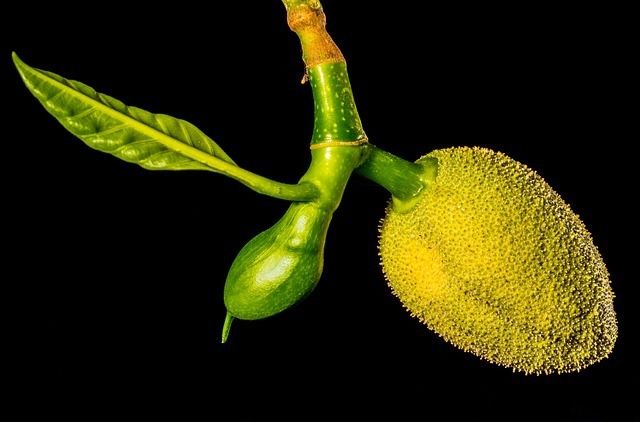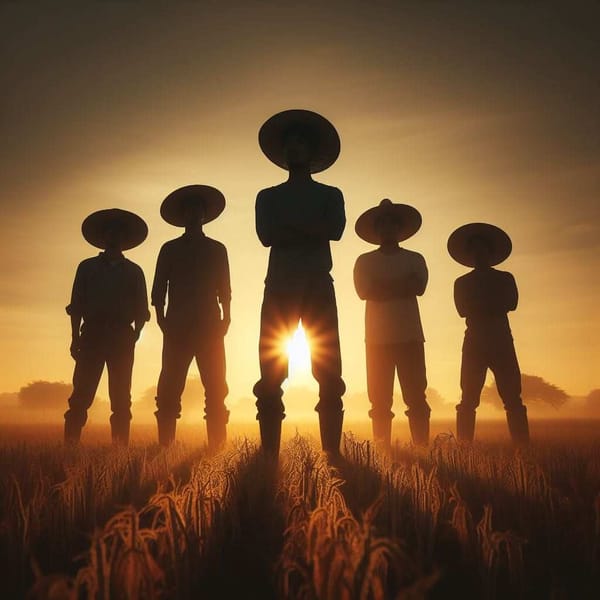Jack Fruit: the world's largest fruit in the Peruvian Amazon
Also known as nanjea or jaca, and similar to the bread tree, it is considered the largest fruit in the world because there are pieces of 50 kilos.

In the Apurímac, Ene, and Mantaro (Vraem) River Valley region in the Peruvian Amazon, producers grow "Jack Fruit", the largest in the world, according to Satipo's "Jack Fruit" estate manager, Saúl Llantoy. The fruit is composed of a heart, a seed, a pulp, a fiber, and on top of the shell, explained Llantoy, who is an expert on the flora and fauna of the Peruvian Amazon.
"What is used most of this fruit are the seeds, pulps, fibers, and peels, the only thing we are discarding is the heart," he said. Another particularity that gives added value to this giant species is that when eating it the person can perceive different sensations in the palate because it tastes like different fruits.
"The fruit has seven flavors, there is no exact flavor, it tastes like melon, papaya, mango, pineapple, peach, citrus, and cucumber," he said. However, he commented that it is not only the volume and taste that arouses the interest of consumers but also the medicinal properties they attribute to it.
Jack Fruit" is also used to make jams, preserves, ice cream, pancakes, empanadas, and juices, he said. Llantoy said that restaurants have also begun to use this delicacy to make traditional Peruvian dishes. "When it's green we use it as a vegan meal, you can make a 'broaster' (fried) of 'Jack Fruit', a 'Jack Fruit' pork rinds, a 'Jack Fruit' ceviche (a typical dish of fish cooked with lemon) or a 'Jack Fruit' sautéed loin," he said.
There are no limits to versatility because the seeds are used to make flour, from which biscuits, empanaditas, and flakes are made to make breakfast as if it were a cereal. We are spreading this fruit, we are cultivating it in the central jungle (Amazonia), in the town of Satipo, exactly in the district of Río Negro, where we have approximately 4 hectares," he noted.
According to Llantoy, growing this fruit requires a seed, which takes four years to produce its first two fruits. In the fifth year, it gives 10 to 20 fruits and in eight years it can yield 80 to 150 fruits. "On the duration of the tree, have been found plants from 100 years to 500 years. It is a stable plant and is planted 10 x 10 in a hectare," he said.
This fruit, originally from Indonesia, arrived in Peru 35 years ago by a Peruvian settler who traveled to that country and brought only one seed. Now it has expanded to other countries like Brazil. Peruvian producers in the central Amazon jungle have received orders for some 20,000 kilos for Chile and the United States, which is why they are adapting their crops to achieve this production.
Largest fruit in the world
Also known as nanjea or jaca, and similar to the bread tree, it is considered the largest fruit in the world because there are pieces of 50 kilos, although its usual weight ranges between 30 and 35. The jackfruit (Artocarpus heterophyllus) is a plant species of the family of the Moraceae, native to Indonesia and national fruit of this Asian Republic and Bangladesh.
The jackfruit can be considered a superfood because it gives us a series of phytonutrients, minerals, vitamins, proteins, carbohydrates, and very beneficial minerals.
At first glance, it does not seem like an appetizing fruit. With exorbitant dimensions (90 centimeters high by 40 wide), its greenish color when it is not yet mature and its rough texture and protuberances are not too attractive. Nor its color when ripe, similar to that of ripe plantain, and its smell improves prospects, but in its case, the good is hidden inside. And it is full of segments of a color between orange and yellow, between 60 and 500 bulbs with a sweet and slightly acid taste, a kind of mixture between orange and mango.
Option for vegetarians
It is a fruit difficult to cut because of the high latex content of its bark, an effective natural colorant, but the jackfruit takes advantage of everything since its leaves are perfect for feeding farm animals. It is even considered a good substitute for meat for its similar texture to pork and chicken, although its protein intake (1.7 grams / 100) does not reach those of the caper (2.4 grams) or avocado (2 grams). gr.). The seeds that are inside their segments do reach 6 grams of protein, even above the lentils, and can be eaten cooked, cooked as legumes, or toast.
Full of benefits
The jackfruit can be considered a superfood because it gives us a series of phytonutrients, minerals, vitamins, proteins, carbohydrates, and very beneficial minerals, but among which its high content of vitamin A, which favors the health of the skin, stands out especially.
In addition, the amount of calcium that can be found in jackfruit is similar to that of milk, but precisely because this fruit also has a high intake of vitamin C, we are helping our body to assimilate much better than calcium. And we have the guarantee that both contributions come from a natural source of food.
The seeds of jackfruit
As their seeds are also edible, and delicious, we can differentiate between the contributions of their pulp and their seeds. In the case of proteins, carbohydrates, and fiber, we will always find a greater contribution in the seeds than in the pulp. But in calcium, where the pulp of the jackfruit is between 22 and 50 grams, its seeds barely have 0.5 grams.




